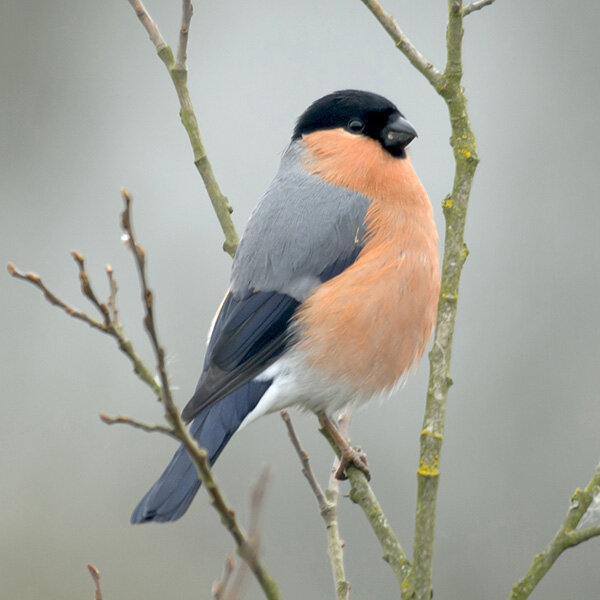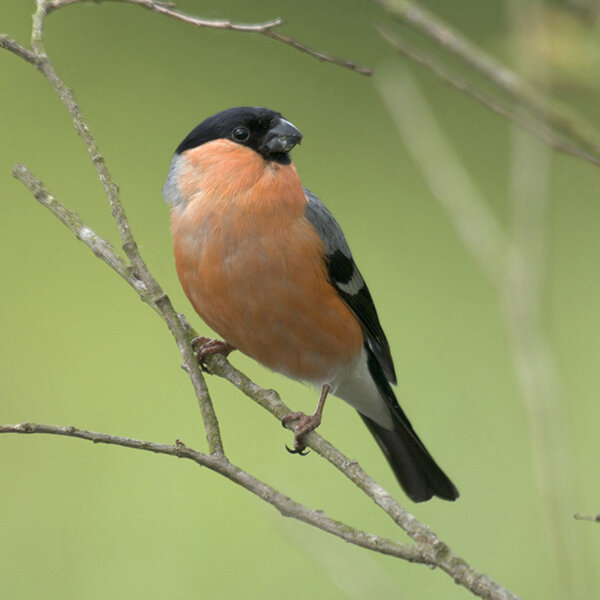Bullfinch
Pyrrhula pyrrhula
The adult male bullfinch is striking and unmistakeable with his bright pinkish-red breast and cheeks. In comparison, the female is more muted with a softly pinkish-buff breast. Both sexes have black caps (extending around the bill) and tails, black wings with a grey-white wing bar, grey backs, and square white rumps. They are thickset birds, stout in stature, with thick-necks and short black conical bills. Juveniles are similar to the females but have a brown head and face.
The call is quiet low-pitched short whistle, a soft ‘heu’ sound. The sound is often described as mournful.
Breeding starts in April to May, and they lay 4-5 light-blue eggs in a nest made from fine twigs, moss and lichens, and lined with fine roots and hair. The eggs are incubated for around 12- 14 days before hatching, and both parents feed the young after they have hatched.
What they eat
They are sometimes considered a pest species by gardeners and fruit growers as they feed on and damage buds of trees and bushes in springtime. They can eat up to 30 buds a minute! They also eat seeds, berries and insects (for young).
Where and when to see them
Bullfinches are active all year round.
Bullfinches are very commonly seen in gardens with seed feeders.
They are also associated with hedgerows, scrub, orchards and woodlands, and are often seen in pairs or small flocks. They have special food sacs in the floor of the mouth which allows the parents to bring back food to their chicks (often from a long distance).
View a bulfinch 10km distribution map of Wales.
Legal status
Currently listed as an Amber species of Conservation Concern. They are also protected by The Wildlife & Countryside Act 1981.
Similar species
Chaffinch (Fringilla coelebs)
A very widespread and abundant bird in Britain and Ireland. The male bird has blue-grey crown and pinkish breast, brown back and double white wing bars. The female is a buff brown colour with white wing bars. In the garden, they tend to feed more on the ground than other finches.
Did you know?
The bullfinch was taken as a cage-bird in the past. Apparently they were very easy to tame and can be taught to imitate sounds and whistles.


